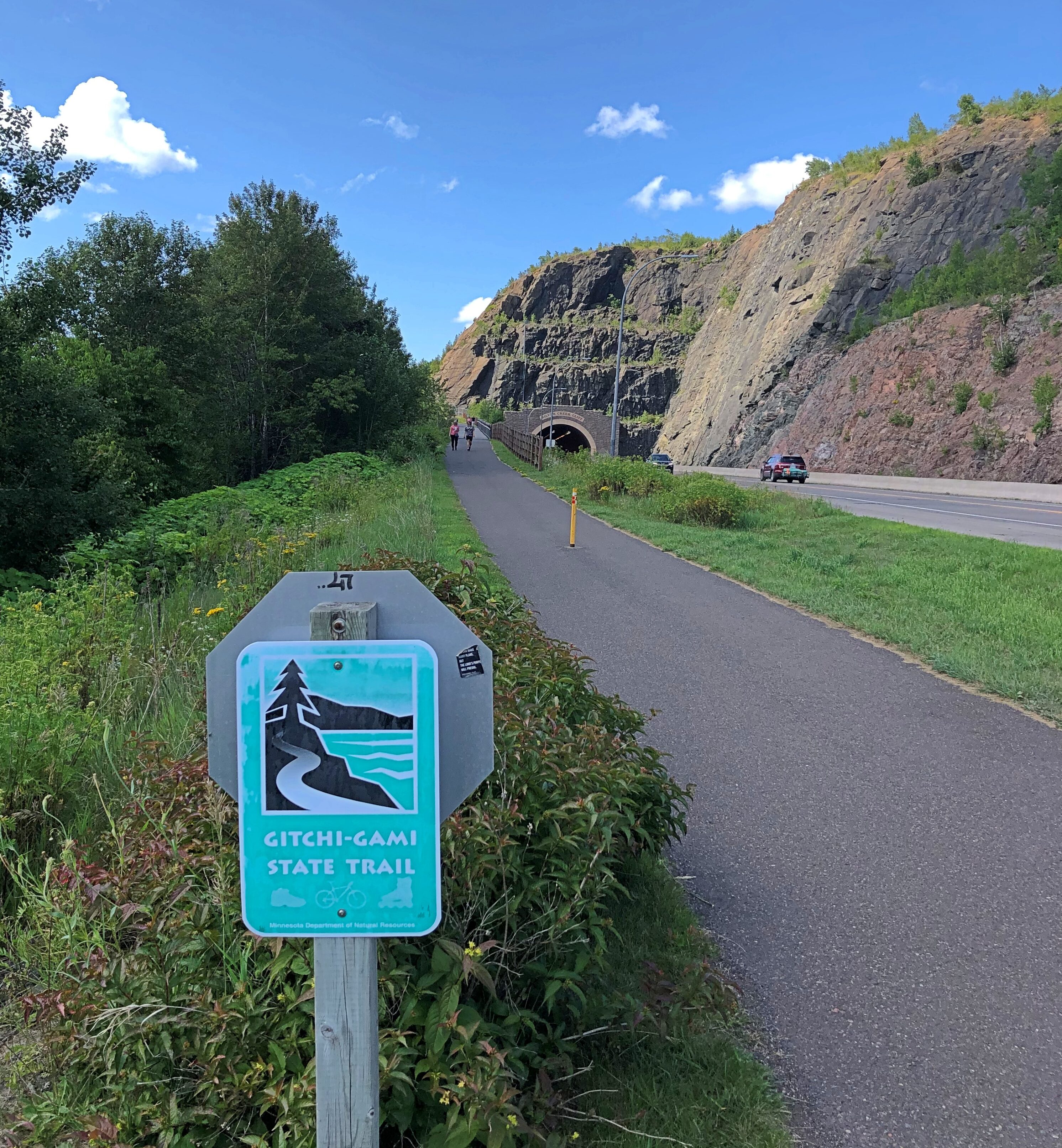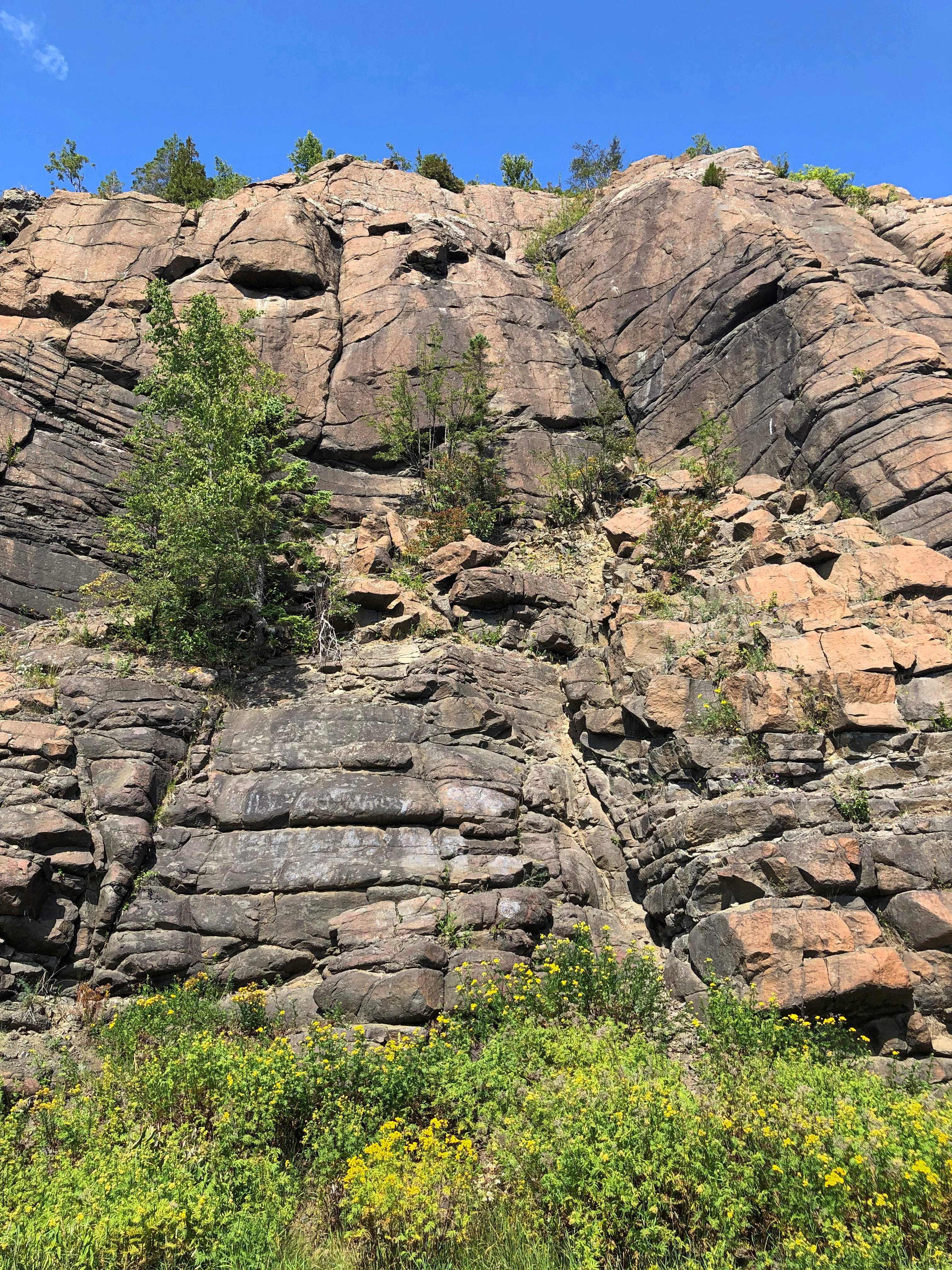A little more than five years ago – where does the time go? (Time stays, we go) – I wrote: “When I was very young, I had a U.S. map puzzle that I put together who knows how many times, fascinated by the individual shapes of the states. Some states more than others, including Minnesota, with its rough northern border, more-or-less straight-back western border, concave eastern border and pointy southeast and especially northeast corners.”
The road that follows the Minnesota coast of Lake Superior is Minnesota 61. We went part of the way in 2018.
I’d wanted to return to the pointy northeast corner since our last visit, so I did on July 30, heading north from Rice Lake, Wisconsin. I’d have stayed in Duluth the night before, but most places were booked there (well, it was a Friday) or insanely expensive. I know there’s been some inflation in hospitality property rates lately, but those prices represented something else. The popularity of northeastern Minnesota in summertime?
Probably, with many visitors heading up to lakes or into the woods. But the crowds along coast from Duluth to the Canadian border near Grand Portage weren’t that intense.
Not long out of Duluth the vistas appear, if you want them. I did.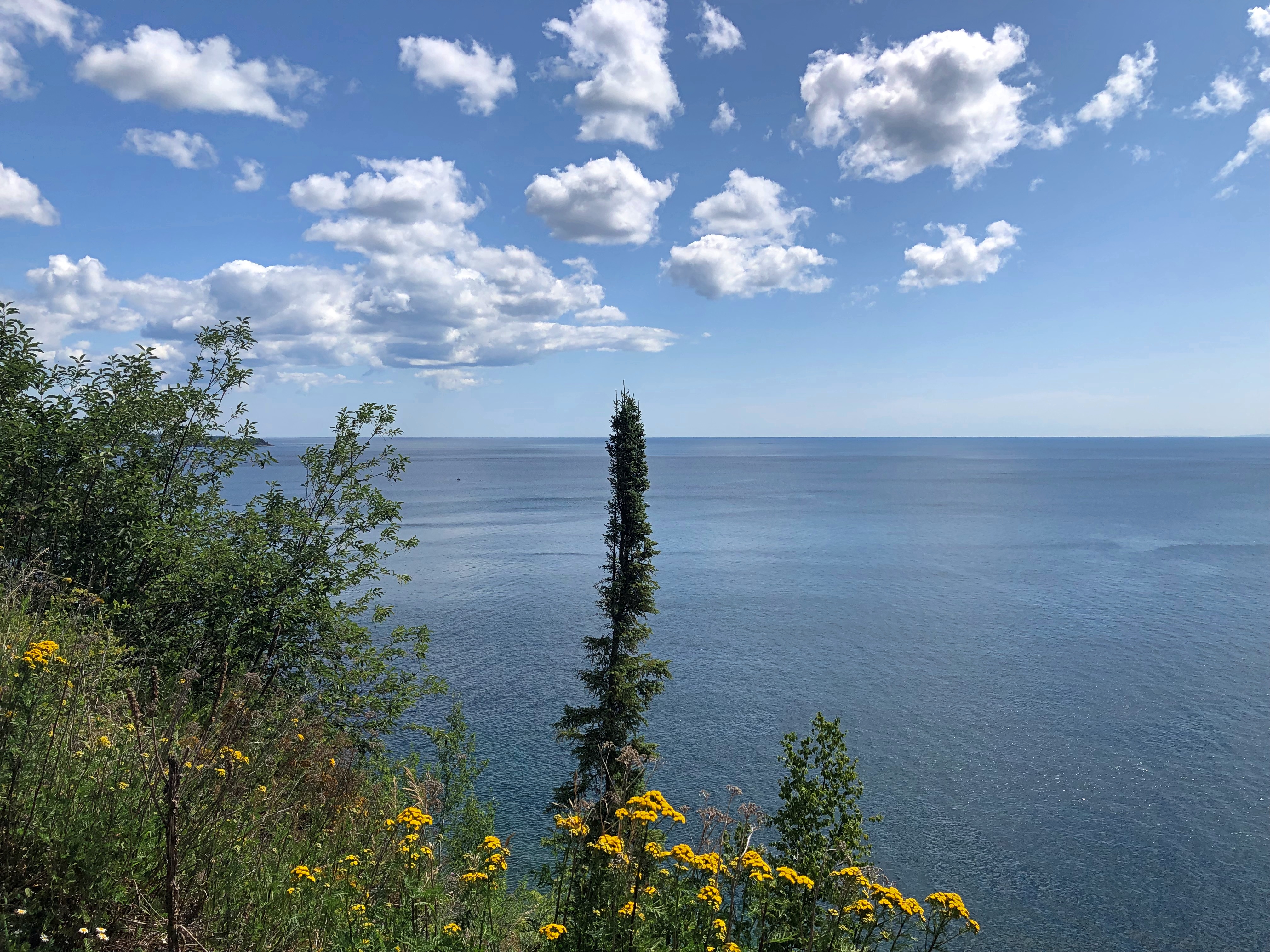

Some miles northeast on Minnesota 61 is a scenic view stop specifically so passersby can see Split Rock Lighthouse.
Still in working order, but not used as a navigation aid since 1969. Its heyday came immediately after its construction in 1910, when it proved invaluable in preventing the grievous loss of men and cargo into the depths of Superior’s ice-water mansion off this particularly treacherous stretch of shoreline.

Cream City Brick? I asked one of the docents, who said he needed to check on that, since I wasn’t the only person who had asked.
Humble quarters for the lighthouse keeper.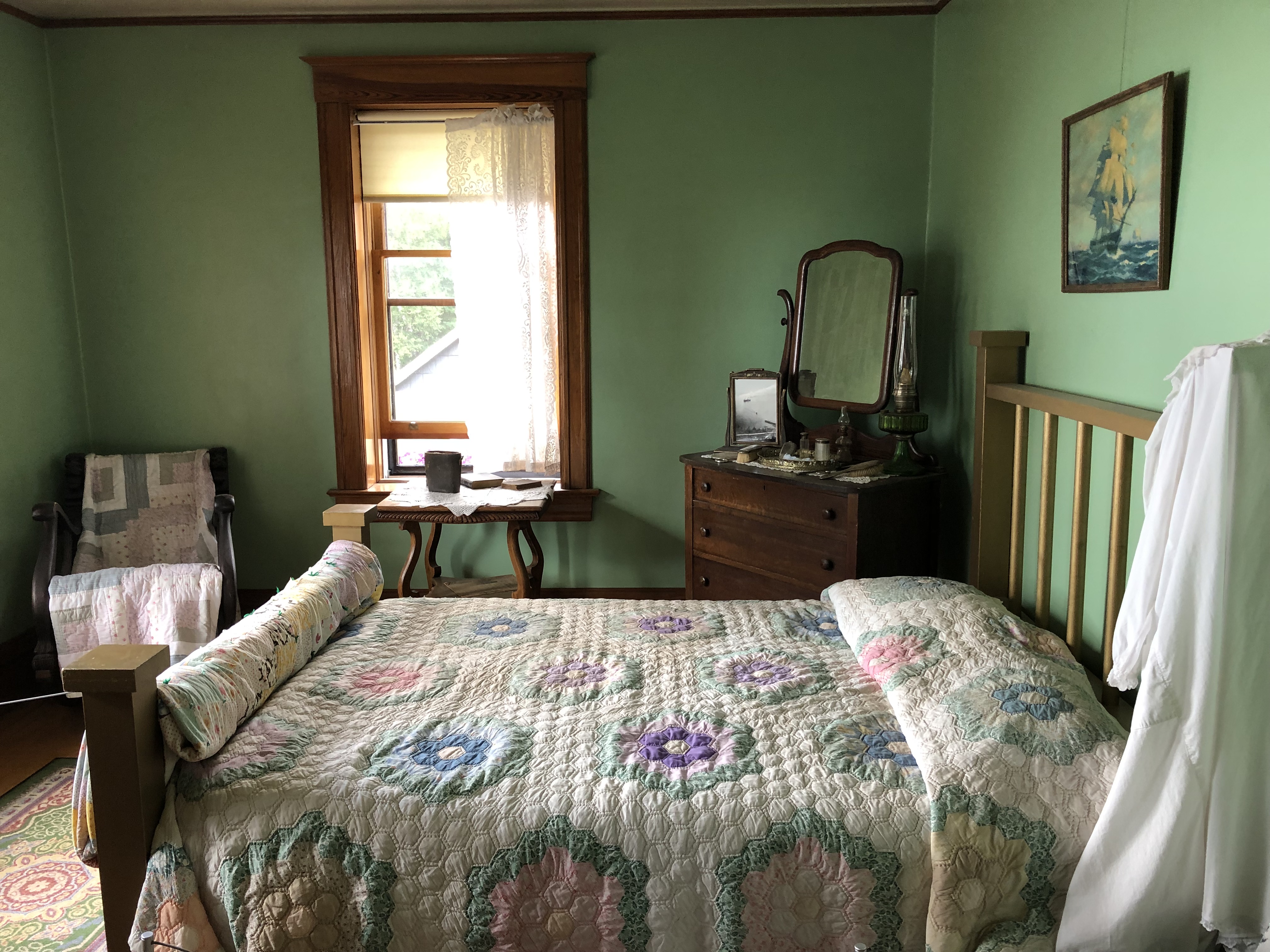
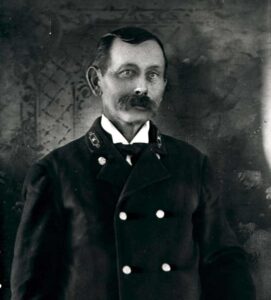 Orren “Pete” Young was the charter keeper at Split Rock Lighthouse, attending to his duties from 1910 to 1928. Wonder who should play him in the in-development prestige streaming drama Split Rock: The Early Years. Lighthouse Service intrigue. The fleshpots of Duluth. Young’s heroism during the Great Storm of 1913. Anyway, casting can be decided after the strike.
Orren “Pete” Young was the charter keeper at Split Rock Lighthouse, attending to his duties from 1910 to 1928. Wonder who should play him in the in-development prestige streaming drama Split Rock: The Early Years. Lighthouse Service intrigue. The fleshpots of Duluth. Young’s heroism during the Great Storm of 1913. Anyway, casting can be decided after the strike.
“A former sailor, Young began his lighthouse career in 1901 serving along Lake Superior’s Michigan coast,” explains the lighthouse web site. “In 1910 Young moved to the new Split Rock Lighthouse. His family, a wife and four children, would come to live at the lighthouse in the summer months but never lived there permanently. In the later years of his career, they lived in a year-round home 20 miles south of Split Rock in Two Harbors.
Split Rock wasn’t only a light, but it had a fog horn as well.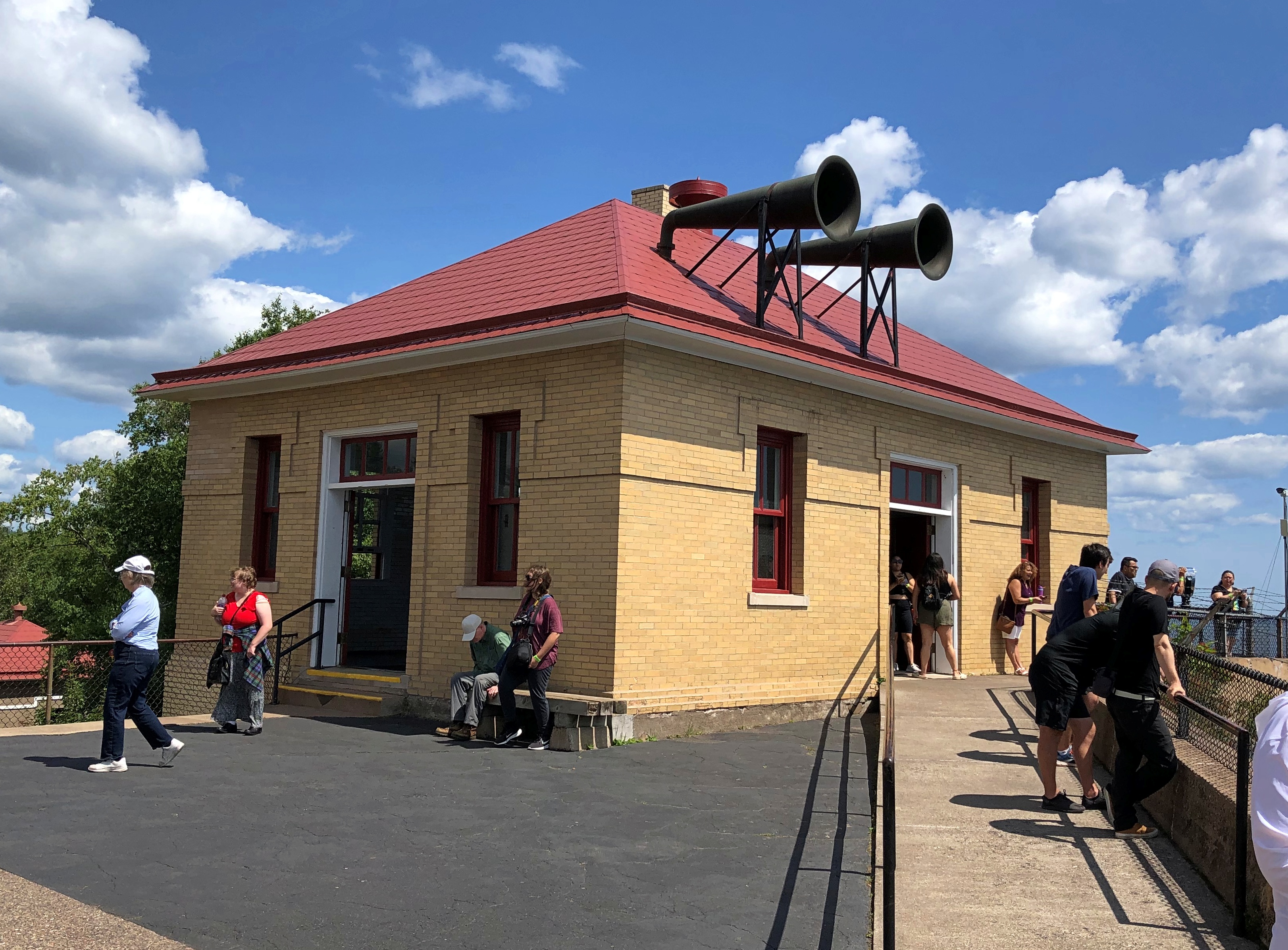
Best of all, a Fresnel lens, that extraordinary amalgam of art and science I’ve only encountered on the shores of Gitchee Gumee. This one is in situ and operational. And rotating. One that can and occasionally does beam its candlepower to some miles out into the lake.
You climb up a few flights of stairs inside the tower to reach the room it occupies.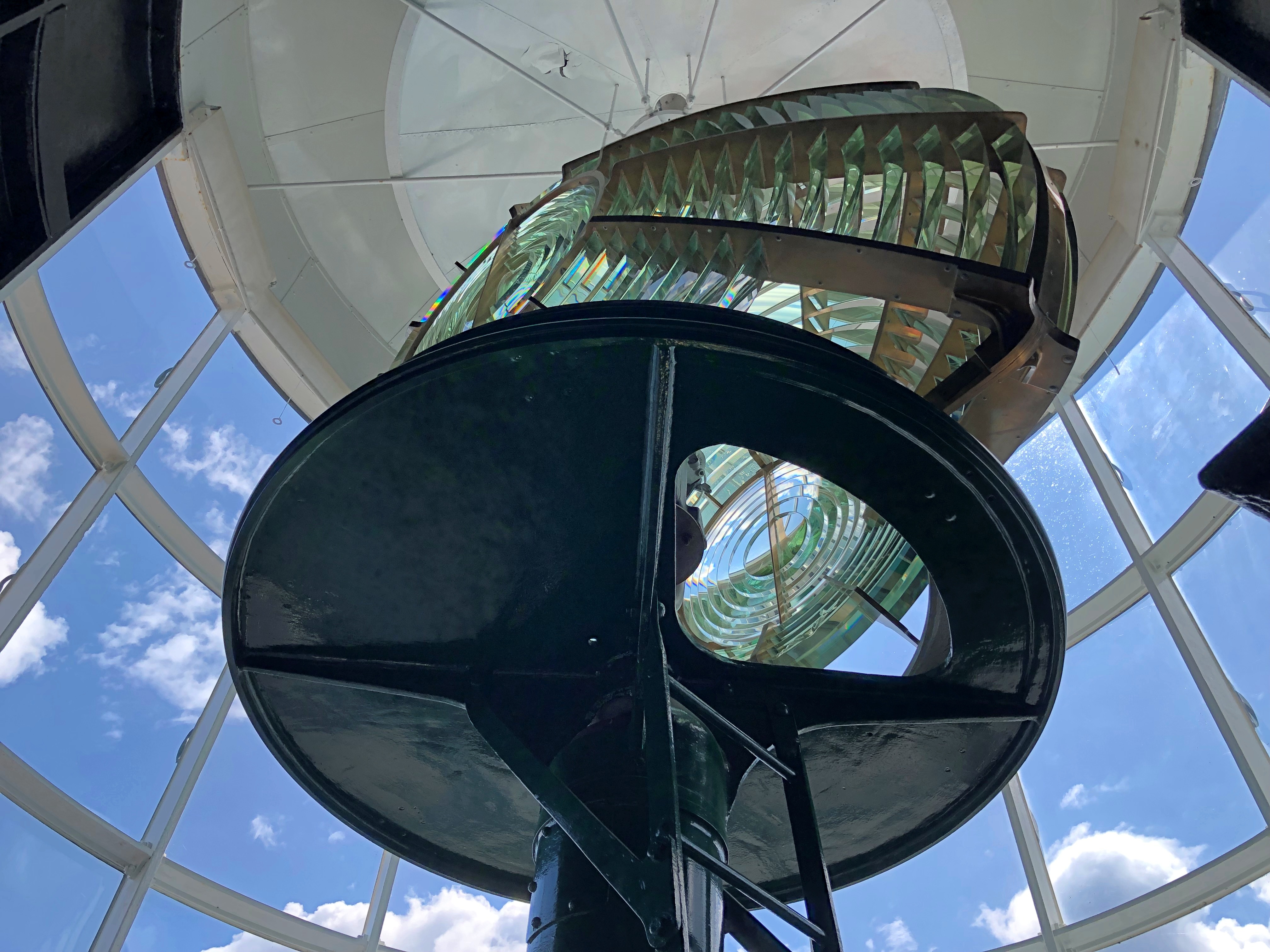
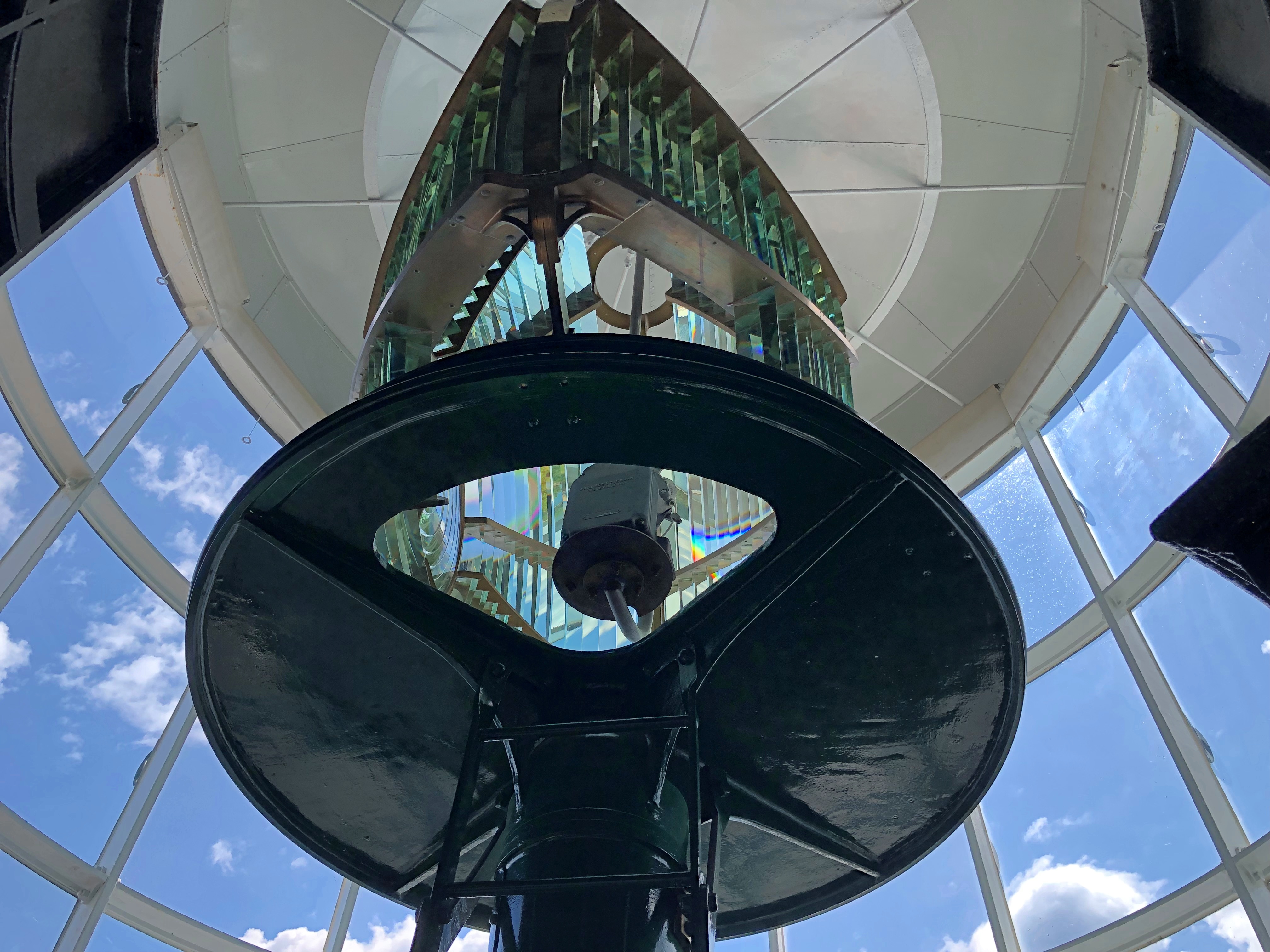
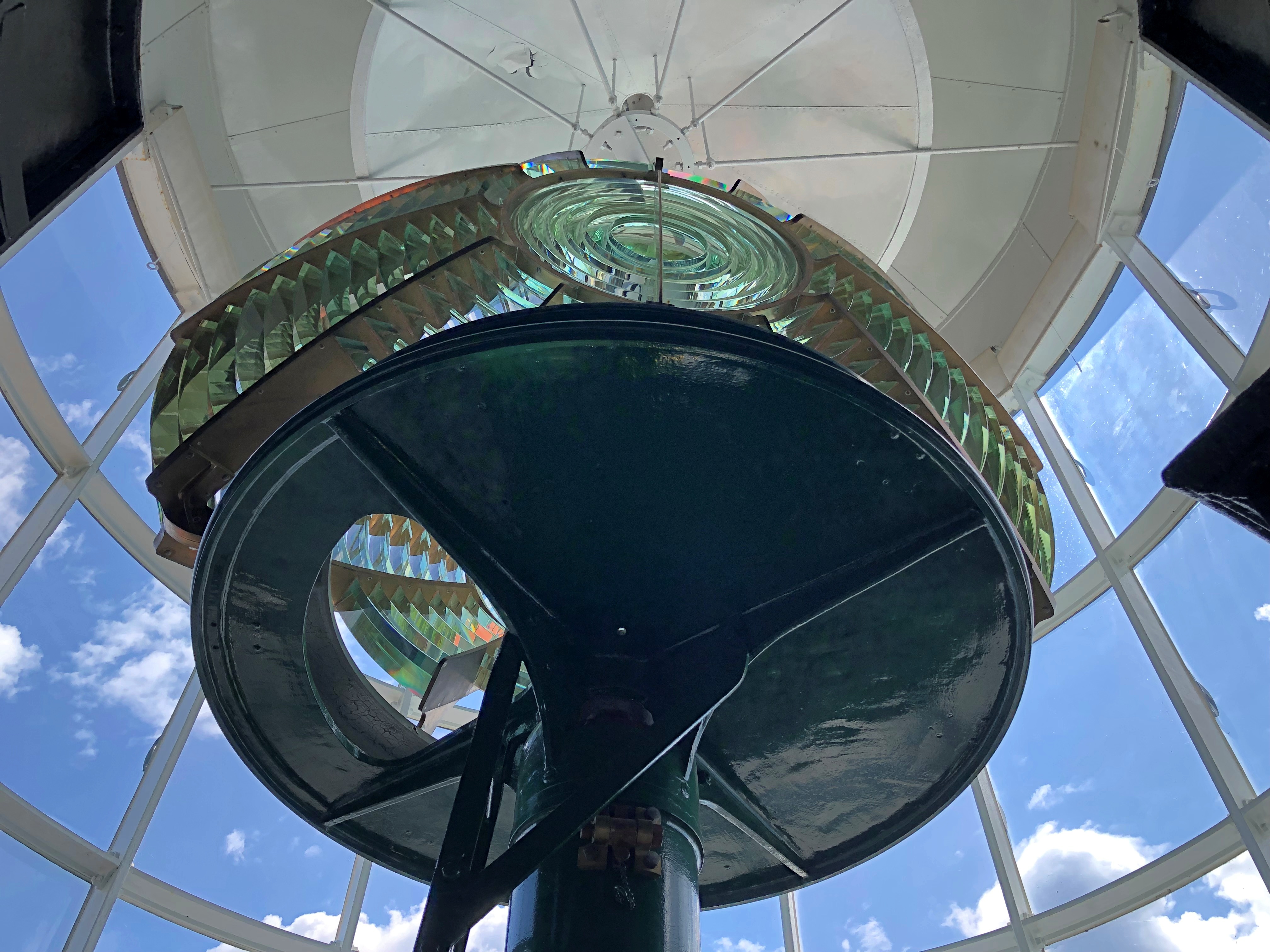
On I went from there, along the two-lane and sometimes winding highway, with periodic views of the lake, and sometime walls of trees on the landward side. Traffic was light, the weather perfectly clear. Near car-commercial driving.
Until about 30 years ago, I’ve read, the road was designated U.S. 61. For reasons enshrined in some file at the U.S. Department of Transportation, the feds de-designated it, leaving it to the state to give it a number. Conveniently, 61.
Grand Marais, Minnesota, pop. 1,300 or so, is up the coast on highway 61 from the lighthouse, and where I went next. I have to like a place that has an event called Moose Madness. That’s in October, so I missed that bit of local color.
Instead, I arrived in time for lunch, and I looked around the main shopping street, which was alive with people, tourists every bit as I was, but not jammed with them. I had my choice, among fixed-address places, of Java Moose Expresso Cafe, Gun Flint Tavern, Blue Water Cafe, Sven & Ole’s (pizza), Superior Creamery and World’s Best Donuts, among others.
There was also a cluster of food trucks. I ordered a small pizza from a one of those, paying tourist prices. It was good, though, sustaining me during the next few hours, when I crossed into Canada.
